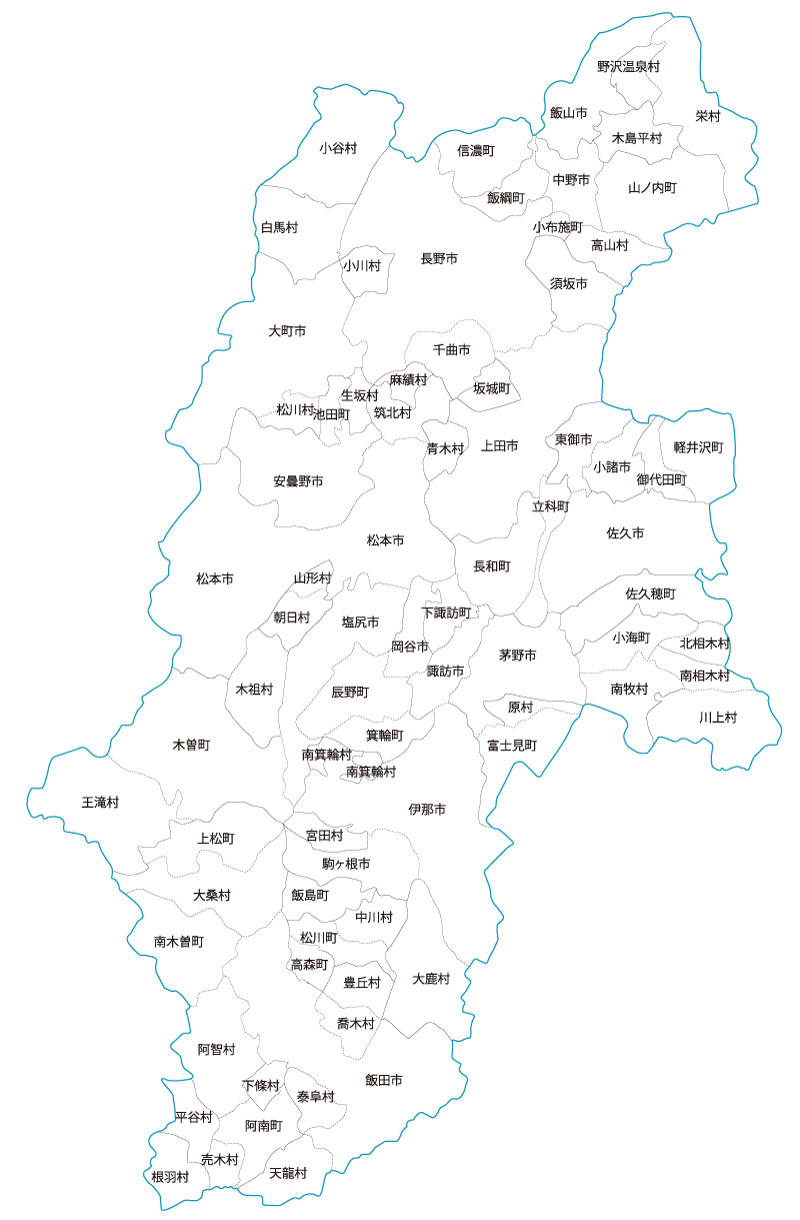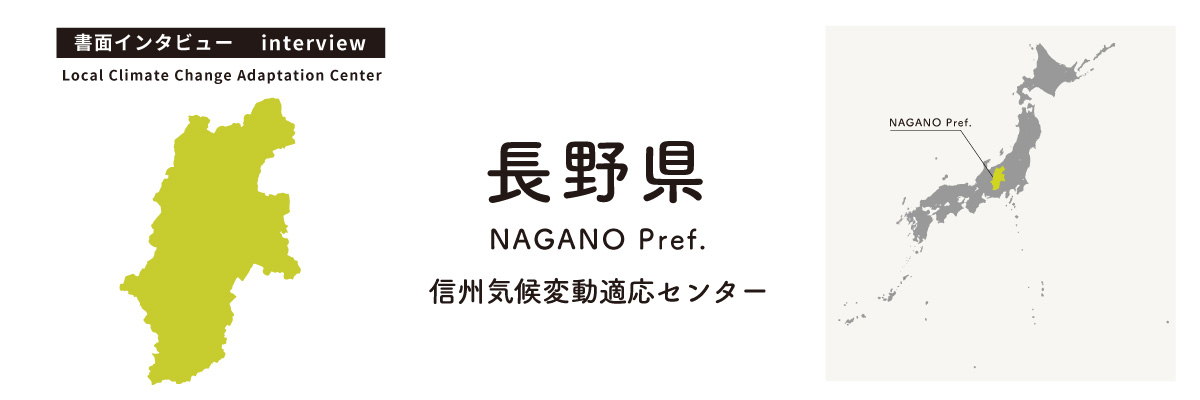Please tell us about Nagano Prefecture’s unique local features and characteristics, what led to the establishment of the Local Climate Change Adaptation Center, and what its organizational structure is like.
In Nagano’s case, the Nagano Environmental Conservation Research Institute – one of the prefecture’s research bodies – is responsible for survey and research activities to assess and monitor the state of the climate change occurring mainly in the prefecture and its effects on the prefecture’s natural environment. We have established the Shinshu Monitoring Network for Climate Change to collect and pool meteorological data from the Nagano Local Meteorological Office and other concerned organizations that are located in the prefecture. We have also set up the Shinshu Climate Change Adaptation Platform to share information related to climate change impact with businesses and municipalities and to devise adaptation measures. The Shinshu Climate Change Adaptation Center was established to serve as the general interface through which all communications related to the two aforementioned organizations would be handled.

Please tell us about the current activities of Nagano’s Local Climate Change Adaptation Center as well as its future plans.
Our Center is conducting activities in the following four areas: 1) collection and organization of essential information based upon which climate change assessment, prediction, and other adaptation action can be conducted; 2) communication of related information to local residents, etc. through the official website, science cafés, and other avenues; 3) provision of support to businesses, municipalities, etc. with their formulation of adaptation measures; and 4) management of the progresses being made under the climate change adaptation plan. In addition, we are conducting research to assess the effects of climate change manifesting on fragile alpine ecosystems, identify methods of addressing freezing- and frost-induced damage risks involving fruit trees at an early stage, predict the impacts of slope failures, landslides, debris flows, and other similar disasters associated with heavy rain and snow, and examine hyperthermia prevention measures applicable to children at schools, etc. Furthermore, we have been providing information, consultation, and other support to municipalities for their formulation of local climate change adaptation plans. Our future plans include the execution of Nagano Prefecture’s first-phase climate change adaptation plan – which was formulated simultaneously with the prefecture’s zero-carbon strategy on June 8, 2021 – in conjunction with prefectural municipalities, private enterprises, etc.
Please tell us about any unique approach that your Local Climate Change Adaptation Center is taking to effectively coordinate with other departments of the Nagano Prefectural Government and to facilitate adaptation by the prefecture and businesses, as well as any issues, etc. you are experiencing.
In terms of coordination with other departments of the prefectural government, we have been sharing and exchanging information, opinions, and ideas with the prefecture’s agricultural and fruit tree experiment and research stations on the provision of high-accuracy forecast information and future freezing- and frost-induced damage risks involving fruit trees with the aim of addressing such risks at an early stage. In addition, concerning the facilitation of adaptation measure implementation in prefectural municipalities, we have so far provided climate change forecast and impact maps to three cities and one township covering their areas and beyond to aid their formulation of local climate change adaptation plans.
Please tell us what motivates you to do your current work and also your outlook on the future.
We feel that the level of the public’s interest in climate change has been on the rise, especially given the aftermath of the Reiwa 1 East Japan Typhoon, extreme summer heat, and reduced snowfalls in winter, etc. in recent years. Therefore, we would like to use this as an opportunity to communicate the importance of climate change adaptation measures as well as mitigation measures to as many people as possible.
(Posted on March 29, 2022)


